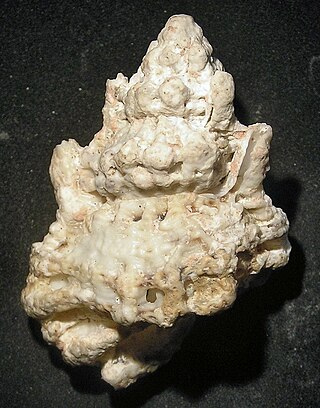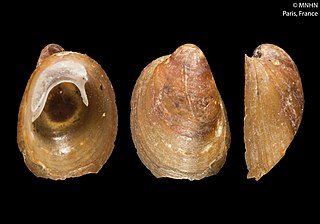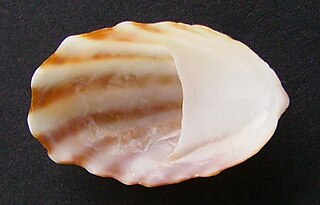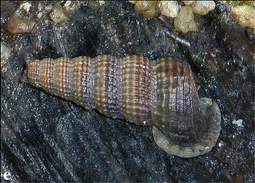
Pholadidae, known as piddocks or angelwings, are a family of bivalve molluscs similar to a clam.

Turritella is a genus of medium-sized sea snails with an operculum, marine gastropod mollusks in the family Turritellidae.

Trivia is a genus of small sea snails, marine gastropod molluscs in the family Triviidae, the trivias.

Siphonariidae, also known as false limpets, are a taxonomic family of small to medium-sized air-breathing sea snails, marine and brackish water pulmonate gastropod molluscs.

Limaria, the file shells or file clams, is a genus of marine bivalve molluscs in the family Limidae.

The Capulidae, the cap snails or cap shells, are a taxonomic family of limpet-like sea snails, marine gastropod molluscs in the clade Littorinimorpha. Capulidae is the only family in the superfamily Capuloidea. According to taxonomy of the Gastropoda by Bouchet & Rocroi (2005) the family Capulidae has no subfamilies.

Conus textile, the textile cone or the cloth of gold cone is a venomous species of sea snail, a marine gastropod mollusk in the family Conidae, the cone snails, cone shells or cones. Textile cone snails live mostly in the Indian Ocean, along the eastern coast of Africa and around Australia.

Pelicaria vermis, known as the small ostrich foot shell or takai in Māori, is a species of sea snail, a marine gastropod mollusc in the family Struthiolariidae. It is the only extant species in the genus.

Bursa is a genus of large sea snails, marine gastropod molluscs in the family Bursidae, the frog snails or frog shells.

Scissurella is a genus of minute sea snails, marine gastropod molluscs in the family Scissurellidae, the small slit snails.

Crepidula, commonly known as the slipper snails, slipper limpets, or slipper shells, is a genus of sea snails, marine gastropod mollusks in the family Calyptraeidae. This family includes the slipper snails (Crepidula), hat snails (Calyptraea), spiny slipper snails (Bostrycapulus), and cup-and-saucer snails (Crucibulum) as well as Crepipatella, Siphopatella, Grandicrepidula, and Maoricrypta.
Annaperenna verrucosa, common name the warty ranella, is a species of large sea snail, a marine gastropod mollusc in the family Bursidae, known as the frog shells.

Maoricrypta is a genus of small to medium-sized sea snails, marine gastropod molluscs in the family Calyptraeidae, the slipper snails, cup and saucer shells and Chinese hat shells.
Isara carbonaria is a medium-large species of sea snail, a marine gastropod mollusc in the family Mitridae, the mitre snails or mitre shells.

Diodora is a genus of small to medium-sized keyhole limpet in the family Fissurellidae.

Cerithidea is a genus of medium-sized sea snails or mud snails, marine gastropod mollusks in the family Potamididae, the horn snails.

Fissurella is a genus of small to medium-sized sea snails or limpets, marine gastropod mollusks in the subfamily Fissurellinae of the family Fissurellidae, the keyhole limpets.

Africotriton crebriliratus is a species of sea snail, a marine gastropod mollusk in the family Cancellariidae, the nutmeg snails.

Engina is a genus of sea snails, marine gastropod mollusks in the family Pisaniidae.

Anachis is a large genus of sea snails in the family Columbellidae, the dove snails.



















